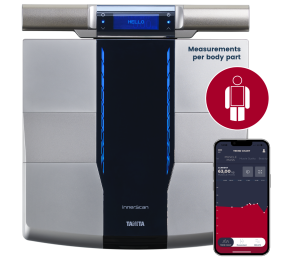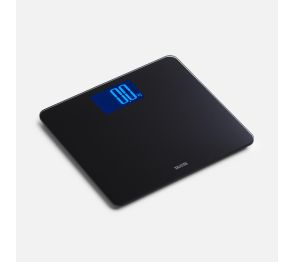For longer life expectancy, head to Japan


Virginie Fauconnet, Professional Marketing Manager at Tanita, the leader in body composition technology headquartered in Tokyo, takes a closer look at ways we can incorporate Japanese habits for healthier – and longer - lives.
This year the number of Japanese people aged 100 or older has risen to a record high of almost 70,000 over the past year. Japan has the highest life expectancy in the world, standing at 84.2 years old. That’s twelve years older than the global average and three years older than the UK.
So what’s their secret to a longer life? While genetics and a strong state healthcare system certainly play a part, research suggests it’s largely down to lifestyle factors: eating fresh, seasonal food, spending more time outside and plenty of exercise.
New reports show that life expectancy growth in the UK is beginning to plateau, with the rise in obesity-related conditions like diabetes and heart disease named as key contributors. It would be wise then to try and incorporate some of these Japanese diet and lifestyle habits into Western culture. This doesn’t mean becoming a master sushi-maker or throwing out your knives and forks in place of chopsticks – it just means making a few simple changes to your routine that can have a huge impact on your health.
“hara hachi bu”
First and foremost, these changes must start in our attitude towards food. The saying “hara hachi bu” originates from Okinawa (an area of south Japan where the local population is famous for living well past 100) and it means to eat until you’re 80% full. This kind of outlook is alien to us in the UK, where snacking is a national pastime and where we’re taught from childhood to always finish everything on our plate.
In modern western society, where food will always be readily available for most of the population, we have forgotten what it feels like to be hungry. Quick and convenient supermarket offerings and the rise of delivery services like Deliveroo and JustEat means it’s easier than ever to get your fix. It’s this mentality that must change. Your attitude should be to eat until you are no longer hungry, not until you are full.
Fresh is best
Unlike in western countries, which rely heavily on processed ready meals, the vast majority of people in Japan cook meals from scratch. As such, they’re able to control the levels of sodium and sugar in their food and consume less preservatives, additives and other chemicals.
Being a nation made up of several islands, the Japanese diet also contains plenty of fish, rich in omega-3 fatty acids. And their love of fermented soy and seaweed makes for a high-nutrient intake, especially phytonutrients like antioxidants and flavonoids.
It goes without saying that this diet brings a number of anti-aging benefits. The Japanese have some of the lowest rates of obesity among both men and women in the world and age-related diseases such as heart disease are markedly rarer.
These habits aren’t hard to adopt yourself, it just requires a little more thought ahead of time. If you’re looking for an easy way to introduce elements of the Japanese diet, there are thousands of quick, simple and healthy recipes available online you can try as alternatives to ready meals. When you stick to homemade, you can’t go too far wrong.
Sitting less, moving more
Operating in a country notorious for its rampant office culture, Japanese companies have had to recognise the need to address how a sedentary lifestyle might impact on their workforce. Many (including Toyota and Sony) have begun to introduce mandatory workplace exercise programmes such as Tai Chi or “rajio taiso”, an exercise routine often learned in schools. It’s a mutually beneficial idea – fitter, healthier workers are happier, more efficient and less likely to need time off.
Make a point of getting away from your desk at lunchtime, whether that means going to a quick gym class or even just taking a short walk outside. All that matters is that you’re getting up and about and raising your heart-rate.
East meets west
Overall, the Japanese have a much better grasp of what it means to live well than we do in the UK. And while attitudes are beginning to change, this must be a nationwide cultural shift towards taking a more holistic, comprehensive approach to our health and well-being.
Body composition monitors, such as Tanita’s BDE machines, are now beginning to replace outmoded BMI systems of assessing an individual’s internal health, measuring over twelve indicators of body composition, including muscle mass, visceral fat and BMR.
At the moment, there is a shortfall in knowledge within the fitness industry of how to interpret this data to the advantage of both clients and gyms. To tackle this, Tanita has developed a specialist training programme to improve and upskill the fitness industry’s understanding of body composition and its uses for delivering a more bespoke experience to the client.
The Tanita Training Academy is CPD accredited and will be held on 21st November in London, with registration open now. To learn more and sign up for your place on the Tanita Training Academy by clicking here: Sign up





